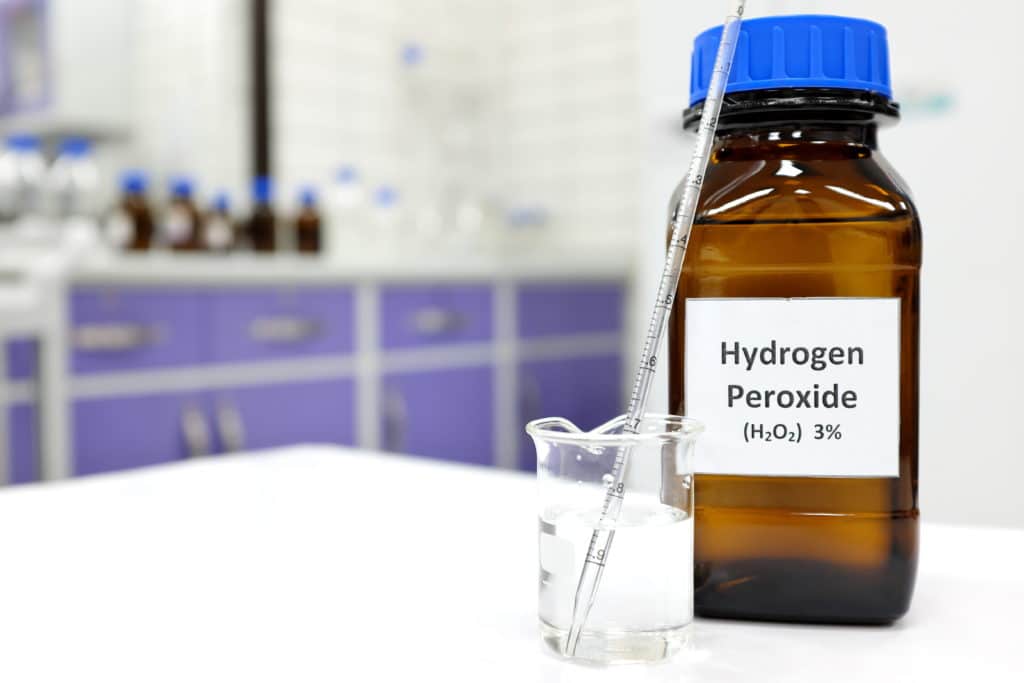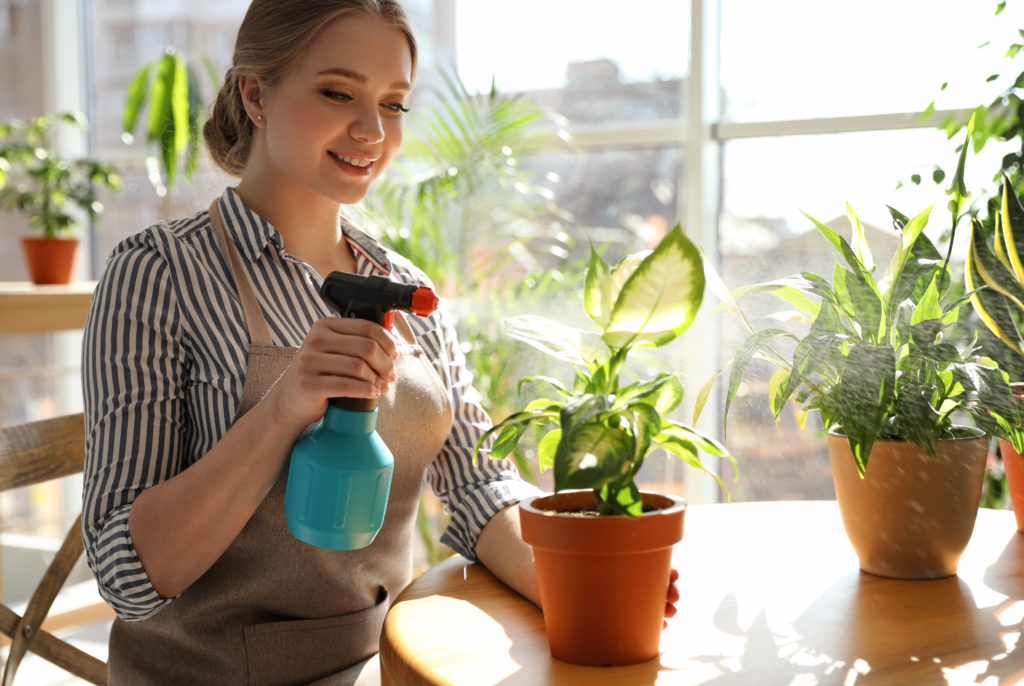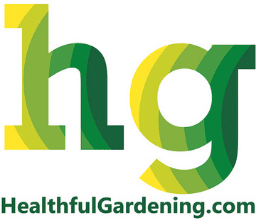
The garden is a well-known place for bugs. They come to feast on the plants and soil, but can also be harmful to humans if they choose to eat your produce.
Hydrogen peroxide is a household item that works as a bug repellent by creating an inhospitable environment for them. It’s safe for both plant life and human consumption, so it’s perfect to use when you’re gardening with vegetables.
Safety Precautions and Hydrogen Peroxide
While you may have terrible recollections of hydrogen peroxide being poured over a skinned knee or sliced finger, it is no longer advised for treating open wounds. It might induce skin irritation and significant damage to your eyes. Even a relatively mild 3% solution needs to be handled with care, employing safety goggles, rubber or other waterproof gloves, and long sleeves.
In addition, when working with hydrogen peroxide solutions or products, take great caution not to spill them and avoid eating, drinking, and smoking while doing so.
While 35 percent hydrogen peroxide is readily available, most garden work may be completed with the over-the-counter 3 percent solution. If you’re using hydrogen peroxide in a greenhouse or to produce large amounts of liquid, the 35 percent solution can be diluted with water to make a 1 to 10 solution.
With care, use safety equipment and avoid breathing the fumes when working with higher concentrations. Keep hydrogen peroxide-containing products in the original packaging in a cold place and away from direct sunshine. Keep it away from children and pets.
A variety of commercially produced agricultural and garden items, such as drench solutions, include higher doses of hydrogen peroxide as one of the active components. Follow the manufacturer’s instructions to ensure safe usage in the garden and greenhouses if utilizing it as a pre-planting dip, a soil drench, or a foliar spray on the lawn or in water features.
Organic Qualities
Gardeners have been using hydrogen peroxide for a long time to help keep pests at bay. It’s one of the most versatile and safe chemicals that you can use in your garden. You don’t need to worry about it harming beneficial insects or pollinators, so feel free to spray liberally.
The next time you’re tending to your garden, try spraying hydrogen peroxide around the plants. You’ll be amazed at how well it works to deter bugs. Not only will your plants be bug-free, but they’ll also be healthy and thriving.
Hydrogen peroxide is a household item that works as a bug repellent. It creates an inhospitable environment for them and is safe for both plant life and human consumption.
Try spraying hydrogen peroxide around the plants next time you’re tending to your garden – you’ll be amazed at how well it works!

Why Does It Work?
Hydrogen peroxide works as a bug repellent by creating an inhospitable environment for these little critters. Insects use their antennae to smell, and hydrogen peroxide creates hydroxyl radicals that mess with insects’ ability to do this.
Hydrogen peroxide is also flammable at high concentrations, which means bugs will avoid it.
Mixture
You can make a hydrogen peroxide mixture to help keep bugs away from your plants. Just mix one part of hydrogen peroxide with four parts of water and spray it on the leaves and soil around your plants.
You can also use this mixture as a foliar feed for your plants – just be sure to avoid contact with the buds and flowers.
How Often Should I Use Hydrogen Peroxide on Plants?
You can use hydrogen peroxide as a bug repellent every time you water your plants. Just add it to the watering can and spray it around the leaves and soil. You can also use it as a foliar feed every two weeks or so. Be sure to avoid contact with the buds and flowers, though.
Hydrogen Peroxide Soil Treatment
It’s crucial to get rid of tiny, fuzzy gnats if they are swarming around your potted plants. The larvae consume organic material in the soil, including the plant’s roots, which is why fungus gnats are so annoying.
One part hydrogen peroxide and four parts water should be mixed together. Soak the soil in a container with the solution. Repeat as needed after each watering until the eggs and larvae are removed and the gnats depart.
According to Weedmaps, treating soil and hydroponic solutions with hydrogen peroxide can also help eliminate root aphids.
Extreme heat or cold may harm some plants, so be careful. Furthermore, by keeping your greenhouse and hydroponic system clean, sterilizing used containers, and rotating your plants, you can improve your gardening skills.
Other advantages of hydrogen peroxide therapy are that it is a powerful oxygenator, breaking down and releasing its oxygen in the soil. This supplies oxygen to the plants’ roots and nutrients. It also has a significant impact on germs and fungus, which are removed from the soil during each watering.
Use a solution of one part hydrogen peroxide to two parts water to water the plant; then allow the soil to almost dry before resuming light irrigation if overwatering is causing your plants problems.
Seed-Starting Solution
Seeds that have not yet been planted require scarification and soaking in water or a sterilizing solution. Hydrogen peroxide is also used to remove mold from seeds. Hard-shelled seeds may be scarified with an emery board or nicked with nail scissors.
Make a 1 percent hydrogen peroxide solution by combining one part hydrogen peroxide with two parts water, as recommended by Healthline, or use the 3 percent ready-to-use solution straight from the bottle.
Soak for 20 minutes in the peroxide solution and then rinse thoroughly, allowing the seeds to dry before planting them in a sterile seed-starting mix or outdoors in your garden.
Ohio State University recommends soaking alfalfa, beans, fenugreek, or other sprouts in a 3 percent hydrogen peroxide solution while growing them for salads and consuming raw.
Warm a 3 percent solution to 140 degrees Fahrenheit in a pan before adding the seeds to a heatproof mesh bag or metal strainer. Maintain at 140 degrees Fahrenheit for five minutes with a candy thermometer before rinsing the seeds for one minute and soaking them again in clean water.
Remove everything that rises to the top of the container, since germs have been connected to debris, before transferring the seeds to clean, sterile containers for sprouting.
Foliar Spray of Hydrogen Peroxide
Hydrogen peroxide can be used as a foliar spray to hydrate plants and eliminate molds and fungus. Test a leaf or two before using any foliar spray to ensure that they are not damaged by the solution. Furthermore, use caution when applying hydrogen peroxide to outdoor plants since it may exacerbate photosensitivity in some plant species, causing damage to the leaves.
1 teaspoon hydrogen peroxide and 1 cup water should be used to cleanse poisonous plants. Spray the leaves thoroughly with this solution to increase humidity throughout the plants as well as hydrate the leaves.
To get rid of insect pests, combine one part hydrogen peroxide with two parts water and spray the foliage and stems daily for a week. Then reduce the frequency of treatments to once per week
To use it as a fungicide spray, combine 4 teaspoons of hydrogen peroxide with 1 pint of water. Alternatively, combine 5 teaspoons each of hydrogen peroxide and baking soda with 1 gallon of water.
Spray the afflicted vegetation early in the morning or late at night every day for one week. If the mildew reoccurs, repeat the process.
Avoid soaking the soil around outdoor plants since the solution might harm earthworms and other helpful insects and bacteria.
Things You Will Need
- 3 percent hydrogen peroxide solution
- Safety goggles
- Rubber gloves
- Broom
- Vacuum cleaner
- Rag
- Scrub brush
- Dishwashing liquid
- Spray bottle
- Measuring cup
- Gallon container
- Heater
- Water chiller
- Emery board
- Nail clippers
- Seed-starting mix
- Saucepan
- Heatproof mesh bag or metal strainer
- Candy thermometer
- Baking soda
